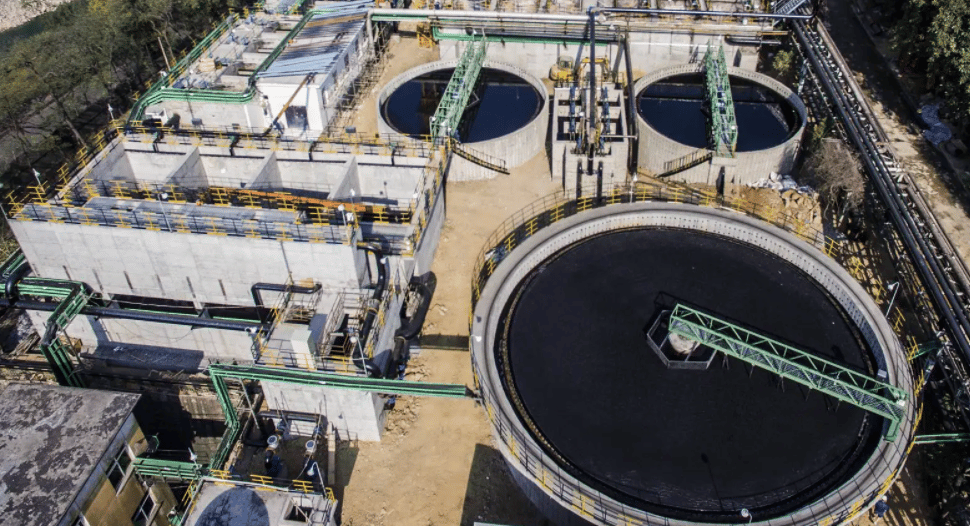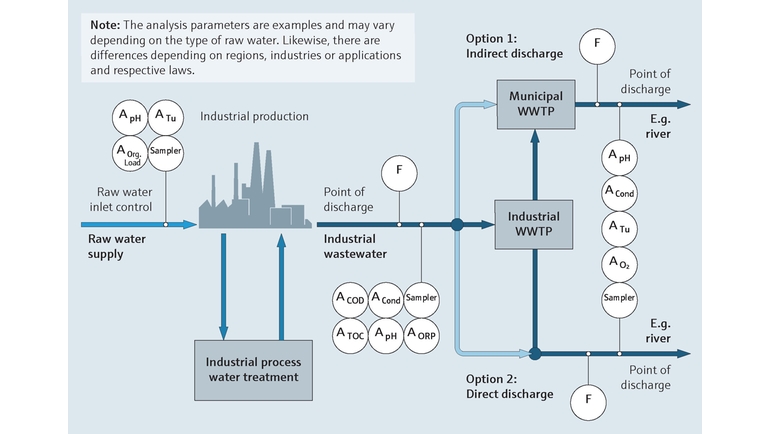Industrial Waste Water Treatment-- Secure the Environment with Professional Water Treatment Services
Industrial Waste Water Treatment-- Secure the Environment with Professional Water Treatment Services
Blog Article
Innovations and Breakthroughs in Industrial Waste Water Treatment Technologies
The landscape of industrial wastewater therapy is undergoing a transformative change, driven by innovations that improve both efficiency and sustainability. As regulative requirements progress, the combination of AI and maker learning right into wastewater monitoring systems guarantees to improve operations and make certain conformity.
Overview of Drainage Therapy Technologies
Wastewater treatment technologies include a variety of techniques created to get rid of impurities from commercial effluents prior to their launch right into the atmosphere. These technologies are important for maintaining eco-friendly equilibrium and making sure compliance with environmental regulations. The primary classifications of wastewater treatment include physical, chemical, and organic methods, each offering distinct objectives based upon the nature of the contaminants existing.

Organic therapy methods use microorganisms to deteriorate raw material, making them specifically reliable for organic-rich effluents. Techniques like triggered sludge and biofilm reactors harness the natural deterioration capacities of bacteria, causing substantial decreases in biochemical oxygen demand (BODY)
Advanced Purification Methods
Advanced filtering methods represent a critical advancement in the realm of commercial wastewater treatment, boosting the effectiveness of contaminant elimination processes. Industrial Waste Water Treatment. These techniques encompass a variety of modern technologies, including microfiltration, ultrafiltration, nanofiltration, and turn around osmosis, which provide sequential obstacles for numerous particle sizes and chemical structures
Microfiltration and ultrafiltration utilize membrane layer systems to remove put on hold solids, bacteria, and bigger organic molecules, enhancing the high quality of effluent before further therapy. Nanofiltration links the void in between ultrafiltration and turn around osmosis, properly removing divalent ions and natural compounds, thus minimizing the load on downstream procedures.
Reverse osmosis offers the highest degree of purification by permitting only water and little molecules to travel through its semi-permeable membrane layers, making it excellent for reclaiming high-quality water from industrial effluents. Current innovations in membrane layer technology, consisting of the growth of even more fouling-resistant and long lasting products, have actually substantially enhanced functional performance and minimized prices.
Including these sophisticated purification methods not just improves the general therapy process yet also adds to sustainability efforts by allowing water reuse and resource recovery in industrial settings. (Industrial Waste Water Treatment)
Biological Treatment Technologies

In addition, the development of engineered biological systems, such as membrane bioreactors visit homepage (MBRs), integrates organic therapy with sophisticated membrane filtration. This assimilation permits greater effluent top quality and reduced impact, making it ideal for space-constrained commercial facilities. Innovations in genetically engineered bacteria have also emerged, enhancing the biodegradation of details pollutants, such as drugs and hefty steels, that are generally testing to eliminate.
Additionally, the execution of bioaugmentation strategies, where advantageous microbes are introduced to boost the existing biological therapy processes, has revealed encouraging cause boosting treatment performance. These technologies collectively symbolize a trend towards even more efficient and sustainable organic therapy techniques that can adjust to the progressing intricacies of industrial wastewater streams. As industries remain to focus on environmental conformity, these organic innovations will certainly play a crucial role in wastewater monitoring.

Source Recovery Techniques
In industrial setups, the assimilation of resource healing methods has actually ended up being increasingly essential for boosting sustainability and reducing waste. These methods concentrate on extracting important materials and energy from wastewater streams, consequently changing potential toxins right into multiple-use resources.
One prominent technique is nutrient recuperation, where nitrogen and phosphorus, commonly existing over in wastewater, are captured and transformed into fertilizers. This not just minimizes ecological effects but likewise gives a circular economy option for farming applications. Furthermore, innovations such as anaerobic food digestion permit the conversion of organic imp source waste right into biogas, a renewable resource resource that can counter nonrenewable fuel source use in commercial procedures.
In addition, progressed filtering and membrane modern technologies promote the healing of commercial by-products such as salts and steels. These recovered products can be rehabilitated right into manufacturing procedures, minimizing the need for virgin resources.
Future Patterns in Drainage Administration
As industries significantly prioritize sustainability, the future of wastewater management is readied to undertake significant makeovers. Technological improvements, such as expert system and artificial intelligence, will make it possible for extra reliable monitoring and administration of wastewater systems. These innovations can predict maintenance requirements, maximize treatment processes, and improve decision-making, eventually lowering operational expenses and ecological effect.
In addition, the combination of round economic situation principles will play a crucial role in wastewater monitoring. Industries are anticipated to change towards systems that not just deal with wastewater yet additionally recuperate their explanation important sources, such as nutrients, water, and energy. This shift will lessen waste and advertise the reuse of products, aligning with international sustainability objectives.
Emerging treatment techniques, such as membrane layer bioreactors and advanced oxidation processes, will certainly better improve the effectiveness of wastewater therapy, permitting greater top quality effluents appropriate for reuse. Additionally, regulatory structures are likely to develop, highlighting stricter standards for wastewater discharge and motivating industries to take on ingenious therapy options.
Verdict
In final thought, the advancement of industrial wastewater treatment modern technologies shows a considerable shift towards enhanced performance and sustainability (Industrial Waste Water Treatment). Technologies in innovative filtration techniques, biological therapies, and resource recuperation approaches highlight the sector's commitment to environmental stewardship.
The landscape of industrial wastewater treatment is undergoing a transformative shift, driven by advancements that boost both performance and sustainability.Wastewater treatment modern technologies encompass an array of methods created to get rid of contaminants from industrial effluents prior to their launch right into the atmosphere.Using the power of organic procedures has led to considerable innovations in the treatment of commercial wastewater.Furthermore, the implementation of bioaugmentation techniques, where beneficial microbes are presented to enhance the existing organic therapy processes, has revealed promising results in enhancing therapy efficiency. These advancements jointly symbolize a trend in the direction of even more lasting and reliable biological treatment methodologies that can adapt to the progressing complexities of commercial wastewater streams.
Report this page